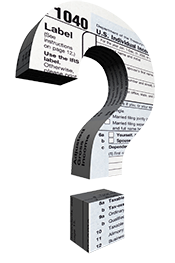There are always moves you can make to reduce your taxable income. Some of these tax-saving moves, however, must be completed by December 31. Here are several to consider:
- Tax loss harvesting. If you own stock in a taxable account that is not in a tax-deferred retirement plan, you can sell your underperforming stocks by December 31 and use these losses to reduce any taxable capital gains. If your net capital losses exceed your gains, you can even net up to $3,000 against other income such as wages. Losses over $3,000 can be used in future years. Just be sure you do not repurchase the same stock within 30 days, or the loss will be deferred.
- Take a peek at your estimated 2022 income. If you have appreciated assets that you plan on selling in the near future, estimate your 2022 taxable income and compare it to your 2021 taxable income. If your 2022 income looks like it may be significantly higher than 2021, you may be able to sell your appreciated assets in 2021 to take advantage of a lower tax rate. The opposite also holds true. If your estimated 2022 taxable income looks like it may be significantly lower than your 2021 taxable income, lower tax rates may apply if you wait to sell your assets in 2022.
 Max out pre-tax retirement savings. The deadline to contribute to a 401(k) plan and be able to reduce your taxable income on your 2021 tax return is December 31. See if you can earmark a little more money from each of your paychecks through the end of the year to transfer into your retirement savings accounts. For 2021, you can contribute up to $19,500 to a 401(k), plus another $6,500 if you’re age 50 or older. Even better, you have until April 18, 2022, to contribute to a traditional IRA and be able to reduce your taxable income on your 2021 tax return.
Max out pre-tax retirement savings. The deadline to contribute to a 401(k) plan and be able to reduce your taxable income on your 2021 tax return is December 31. See if you can earmark a little more money from each of your paychecks through the end of the year to transfer into your retirement savings accounts. For 2021, you can contribute up to $19,500 to a 401(k), plus another $6,500 if you’re age 50 or older. Even better, you have until April 18, 2022, to contribute to a traditional IRA and be able to reduce your taxable income on your 2021 tax return.- Make cash charitable contributions. If you’re like 90% of all taxpayers, you get no tax benefit from charitable contributions because you don’t itemize your personal deductions. On your 2021 tax return, however, you may contribute up to $300 in cash to a qualified charity and deduct the amount whether or not you itemize your deductions. Married taxpayers who file jointly may contribute $600. You can make your contribution by check, credit card, or debit card. Remember that this above-the-line deduction is for cash contributions only. It does not apply to non-cash contributions.
- Bunch deductions so you can itemize. Are your personal deductions near the amount of the standard deduction for 2021: $12,550 for singles, $18,800 for head of household and $25,100 for married filing jointly? If so, consider bunching your personal deductions into 2021 so you can itemize this year. For most, the easiest way is to bunch two years of charitable contributions into a single year. These can include gifts of appreciated stock where you get to deduct the fair market value without paying capital gains tax.
Tax and financial planning is a year-round proposition. In fact, you can benefit personally from a continuous, 12-month rolling forecast, much like a business does.
What is a rolling forecast?
Rolling forecasts let you continuously plan with a constant number of periods 12 months into the future. For example, on January 1, you would plan what your financial picture looks like each month through January 1 of the following year. When February 1 rolls around, you would then drop the beginning month and add a forecast month at the end of the 12-month period. In this case, you add February of the next year into your 12-month forecast.
 The month you add at the end of the 12 months uses the finished month as a starting point. You then make adjustments based on what you think might happen one year from now. For example, if you know you are going to get a raise at the end of the year, your next-year February forecast would reflect this change.
The month you add at the end of the 12 months uses the finished month as a starting point. You then make adjustments based on what you think might happen one year from now. For example, if you know you are going to get a raise at the end of the year, your next-year February forecast would reflect this change.
How to take advantage of a rolling forecast
By doing tax and financial planning in rolling 12-month increments, you may find yourself in position to cash in on tax- and money-saving opportunities within the next 12 months. Here are several strategies to consider:
- Plan your personal budget. Will you need to put a new roof on your house? How about getting a new vehicle? Do you need to start saving for your kids’ college education? A rolling 12-month forecast can help you plan for these expenses throughout the year.
- Plan your healthcare expenses. If you have a flexible spending account (FSA) for healthcare or dependent care expenses, forecast the amount you should contribute for the calendar year. Although unused FSA amounts are normally forfeited at year-end, your employer may permit a 12-month grace period (up from 2½ months) for 2021. This means that you could potentially roll over your entire unused FSA balance from 2021 to 2022. Your forecast can help you see the impact of this change.
- Plan your contributions to a Health Savings Account (HSA). When an HSA is paired with a high-deductible health insurance plan, you can take distributions to pay qualified healthcare expenses without owing any tax on the payouts. For 2021, the contribution limit is $3,600 for an individual and $7,200 for family coverage. In this case, you can forecast an increase in contributions and double-check to ensure you have enough money on hand to pay future bills.
- Plan your estimated tax payments. This is often significant for self-employed individuals and retirees with investment earnings. The quarterly due dates for paying federal and state tax liabilities are April 15, June 15, September 15, and January 15 of the following year (or the next business day if the deadline falls on a holiday or weekend). So, if your personal income is seeing a recovery from the pandemic, your rolling forecast will show this and allow you to plan for the estimated tax payments.
- Plan your retirement contributions. If you participate in your company’s 401(k) plan, you can defer up to $19,500 to your account in 2021 ($26,000 if you’re 50 or over). Contributions and earnings compound tax-deferred. As the year winds down, you might boost your deferral to save even more for retirement.
While initially setting up a rolling 12-month forecast can be a bit of a pain, once established, it is pretty easy to keep up-to-date as you are simply rolling forward last month into the future. A well-planned system can often be the first sign of future challenges or potential windfalls!
 With the April 15 tax filing deadline right around the corner, here are answers to some common tax questions.
With the April 15 tax filing deadline right around the corner, here are answers to some common tax questions.
- When will I get my refund? The pandemic and additional stimulus payments will, in all probability, delay refund payments. But as of now here are the old wait times to receive your refund.
* E-file return with a direct deposit – 1 to 3 weeks
* E-file return with a mailed check – 1 month
* Paper file return with a direct deposit – 3 weeks
* Paper file return with a mailed check – 2 months
NOTE: If you want exact information on the status of YOUR refund go to www.irs.gov/refund and follow their instructions.
- What’s the most common delay in completing a tax return? Missing items! W-2 and 1099 forms are some of the most common tax documents to go missing. If you have multiple jobs, whether full-time or part-time, you’ll be getting multiple documents in the mail. It’s easy to lose track of all these documents if you don’t have one place you put them once received.
- Can I still get a stimulus payment? If you’re still waiting on either the 2020 or 2021 stimulus payment, file your 2020 tax return and claim the Recovery Rebate Credit. This is why it is important to keep track of any payments you receive from the government during the year. You will need them to account for any missing payments or underpayments.
- Can I correct a tax form that has an incorrect dollar amount? If you receive a tax document with incorrect information, contact the company that issued the document and try to get it fixed immediately. If you can’t get a corrected form right away, include both the incorrect form and the correct dollar amount when turning in your tax documents to have your return prepared.
- Can I deduct charitable contributions if I don’t itemize? In 2020 you can claim a $300 charitable contribution deduction regardless of whether or not you itemize your deductions. If you missed this window of this above-the-line donation in 2020, never fear as it is also available in 2021 with an increased limit to $600 for married couples. So, save those donation receipts!
- Is this taxable? While there are always exceptions, the most common taxable items that are questioned include unemployment benefits and withdrawals from non-Roth retirement accounts. Some things, like Social Security, are often, but not always, taxable.
With summertime activities in full swing, tax planning is probably not on the top of your to-do list. But putting it off creates a problem at the end of the year when there’s little time for changes to take effect. If you take the time to plan now, you’ll have six months for your actions to make a difference on your 2019 tax return. Here are some ideas to get you started.
Know your upcoming tax breaks. Pull out your 2018 tax return and take a look at your income, deductions and credits. Ask yourself whether all these breaks will be available again this year. For example:
- Are you expecting more income that will bump you to a higher tax rate?
- Will increased income cause a benefit to phase out?
- Will any of your children outgrow a tax credit?
Any changes to your tax situation will make planning now much more important.
 Make tax-wise investment decisions. Have some loser stocks you were hoping would rebound? If the prospects for revival aren’t great, and you’ve owned them for less than one year (short-term), selling them now before they change to long-term stocks can offset up to $3,000 in ordinary income this year. Conversely, appreciated stocks held longer than one year may be candidates for potential charitable contributions or possible choices to optimize your taxes with proper planning.
Make tax-wise investment decisions. Have some loser stocks you were hoping would rebound? If the prospects for revival aren’t great, and you’ve owned them for less than one year (short-term), selling them now before they change to long-term stocks can offset up to $3,000 in ordinary income this year. Conversely, appreciated stocks held longer than one year may be candidates for potential charitable contributions or possible choices to optimize your taxes with proper planning.
Adjust your retirement plan contributions. Are you still making contributions based on last year’s limits? Maximum savings amounts increase for retirement plans in 2019. You can contribute up to $13,000 to a SIMPLE IRA, up to $19,000 to a 401(k) and up to $6,000 to a traditional or Roth IRA. Remember to add catch-up contributions if you’ll be 50 by the end of December!
Plan for upcoming college expenses. With the school year around the corner, understanding the various tax breaks for college expenses before you start doling out your cash for post-secondary education will ensure the maximum tax savings. There are two tax credits available, the American Opportunity Tax Credit (AOTC) and the Lifetime Learning Credit. Plus there are tax benefits for student loan interest and Coverdell Savings accounts. Add 529 college savings plans, and you quickly realize an educational tax strategy is best established early in the year.
Add some business to your summer vacation. If you own a business, you might be able to deduct some of your travel expenses as a business expense. To qualify, the primary reason for your trip must be business-related. Keep detailed records of where and when you work, plus get receipts for all ordinary and necessary expenses!
Great tax planning is a year-round process, but it’s especially effective at midyear. Making time now not only helps reduce your taxes, it puts you in control of your entire financial situation.
 As the end of the year approaches, there is still time to make moves to manage your tax liability. Here are some ideas to consider.
As the end of the year approaches, there is still time to make moves to manage your tax liability. Here are some ideas to consider.
Maximize your retirement plan contributions. This includes traditional IRAs, Roth IRAs, and SEP IRAs for self-employed. Now is the time to maximize the contribution potential for this year and plan for next year’s contributions.
Estimate your current and next year taxable income. With this estimate you can determine which year receives the greatest benefit from a reduction in income. By understanding what the tax rate will be for your next dollar earned, you can understand the tax benefit of reducing income in this year versus next year.
Make charitable contributions. Consider which tax year will benefit most from your charitable giving of cash and non-cash items. Shift your giving into the year that will provide you the most benefit.
Take capital losses. Each year you can net capital losses against capital gains. You can also deduct up to $3,000 in excess losses against your other income. Start to identify which investments may make sense to sell to take advantage of this. If planned correctly, these losses can offset ordinary income.
Consider donating appreciated stock. This strategy gives you a charitable deduction for the market value of the stock, while not having to pay capital gains tax on the charitable gift. If you provide an annual pledge sheet to your church, this can be a great way to maximize your gift while giving needed funds to your church at the beginning of the year.
Retirement plan distributions. If you are age 70½ or older, take your required minimum distributions for the year. If you are retired, but younger than 70½, consider taking tax efficient distributions from your retirement accounts. By paying some tax now, you may avoid paying higher taxes later when you have to follow the minimum distribution rules.
Consider tax legislation. Please recall that tax laws passed in late 2016 made many temporary tax savings permanent and extended others into 2017. So save classroom related receipts if you are a teacher. Consider charitable contributions from your retirement plan if you are a senior. Keep receipts of large purchases to track a potential sales tax deduction.
Is your retirement portfolio a mess? Sometimes a natural result of changing jobs several times over your lifetime can be an accumulation of several retirement accounts. For example, you may have three 401(k) accounts, a Roth IRA and a couple of traditional IRAs.
Is it best to leave everything as is, keeping a mishmash of accounts, or is consolidation worth considering?
If you are contemplating consolidation, here are some factors you need to take into account:
Roth IRAs – If you are in a consolidation mood, one thing to remember is you don’t want to mix the money in a Roth IRA with the money in a traditional IRA or a 401(k) account. The reason: Contributions to a Roth IRA have already been taxed, so you don’t pay tax on them when you reach retirement and begin withdrawing money. But with traditional IRAs and 401(k) accounts, the taxes were deferred so they are subject to tax when you begin withdrawals.
Nondeductible IRAs – Money placed in a nondeductible IRA, as the name implies, isn’t a deduction on your income taxes. That means you won’t pay any taxes on the money you contributed when the time comes to withdraw it either. Just as with a Roth IRA, you don’t want this money mixed with retirement money that is taxed when it is withdrawn.
Merging 401(k) accounts – Often you can merge a 401(k) from a previous employer into a 401(k) at your new employer. That kind of consolidation can be convenient because you just have one account to monitor. But it’s not always the best strategy because some 401(k) plans are better than others. Fees with the old plan might be lower than the new plan, or the investment options might be more varied. You also have the option to roll the old 401(k) into an IRA, which could be worth considering depending on your circumstances.